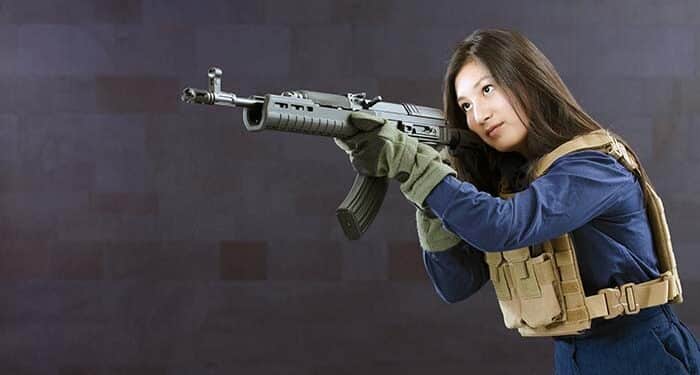By Oleg Volk
The vz 58 is a very lightweight 7.62×39 carbine with a short-stroke piston action adopted by the Czechoslovak military in the late 1950s. The abbreviation “vz” stands for Vzor (model), the full name being Samopal Vzor 58 or Automatic Weapon Model 58. It was one of the first Czech arms to use the Soviet cartridge instead of the longer Czech 7.62x45mm round. Lighter than the AK-47 by 1.3 pounds despite a milled receiver, it used alloy magazines that weighed half as much as the steel AK-47 mags. Although similar in overall size to the AK, the slimmer pistol grip and stock make it look smaller. The rifle was exported to about 20 countries, mainly developing nations. With the 15.4-inch barrel extended to 16 inches with a shroud and semi-auto trigger group, it was imported to the US by Czechpoint USA of Knoxville, TN.
Warsaw Pact countries used the catchall term “avtomat” to describe both submachine guns and light automatic rifles. A technical term for “submachine gun” existed, but it wasn’t in common use. The doctrinal niche for the early automatic rifles was almost the same as for the pistol-caliber SMGs, so the vz 58 was designed more along the lines of an MP5 than of a SIG550. It’s handy in close quarters and accurate enough for intermediate ranges, but it had neither the accuracy nor the heat endurance of a mainline infantry rifle. Ironically, that made it better suited to civilian self-defense than the rifleman’s ideal rifle, such as the M14. Most defensive encounters happen up close, and few go beyond the first 30-round magazine.
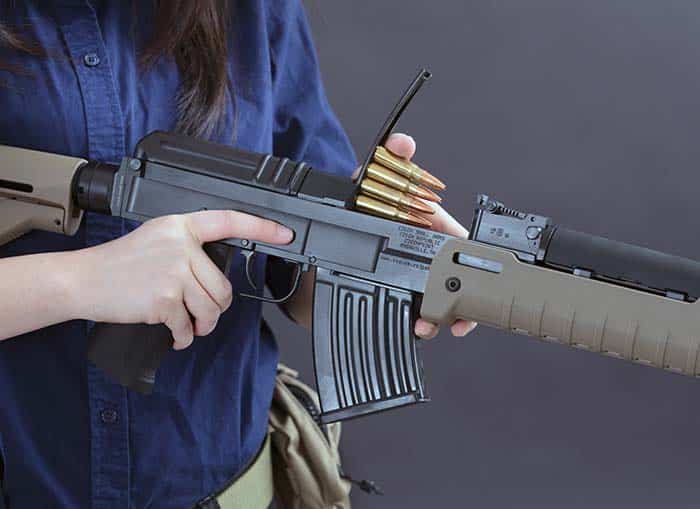
The action design is similar to that of the Walther P38 or Beretta M9: a short-stroke piston acts on a bolt carrier, which actuates a locking block between it and the bolt. The lugs of the locking block engage with the rails machined inside the all-steel receiver. The mechanism works very well, with a very smooth and mild recoil impulse. A linear striker sleeve passes through the bolt carrier, in turn operating the firing pin. The entire receiver top opens during the ejection cycle, and empties are removed forward and slightly to the right by the fixed ejector on the receiver floor, making this rifle friendly to left-handed shooters. Nonetheless, the open nature of the receiver makes it more susceptible to the ingress of mud. The vz 58 is very suppressor friendly, despite the gas system without a manual regulator. The removable receiver cover also holds guide rods for the recoil spring and the striker spring.
The lightweight aluminum magazine, ribbed for strength, is externally similar to the AK mag. It holds 30 rounds and rocks in the same way, though with far less effort required for proper alignment with the receiver. With the action locked open after the last round or manually with the plunger near the trigger guard, the magazine may be topped off with stripper clips. While manual bolt hold-open is provided, bolt release requires the charging handle integral to the bolt carrier to be operated. An extended aftermarket part to add that functionality is available. The magazine may be safely used as a hand-hold, there’s absolutely no play in the lockup. Ten-round magazines are also available for bench shooting or use in restricted states.
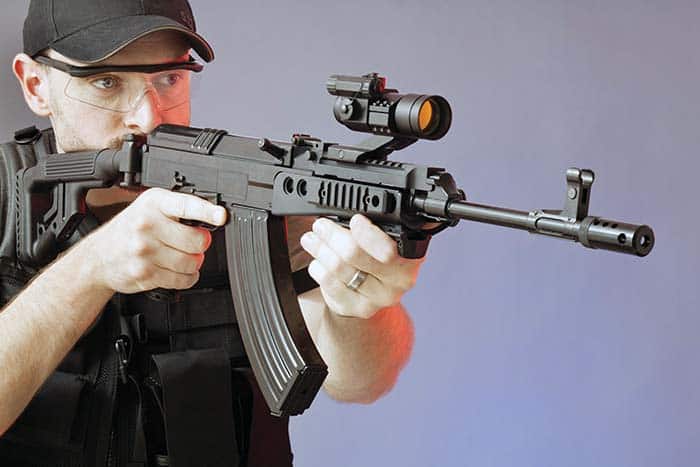
The rifle was originally available in three variants: with a fixed, resin-impregnated wood stock, with a folding “wire” stock and with a collapsible stock and railed forend. Out of preference, I mainly used the fixed wood stock. Because of its short length of pull and relatively light weight, the carbine can be effectively run by 10-year-old kids. Felt recoil is very mild, below that of the heavier AK-47. The rotary safety is easy to reach, and left-handed shooters can activate it with thumbs.
As the rifle gained moderate popularity in the US, it became clear that it had shortcomings as well as advantages. The railed forend on the “tactical” version proved too unsteady for the red dot, and the variant overall was not a success. The rifle runs extremely cleanly and the receiver contains minimal carbon residue, even after several hundred rounds. However, the lightweight barrel and the operating system do impose tactical limitations, the most obvious being accuracy and heat endurance. The rifle can fire about 60 rounds in a row before the forend gets uncomfortably hot. For military use, that can be an issue, but it is an unlikely scenario in personal defense. With the stock iron sights, I and other shooters got groups around 5MOA with Comblock military surplus and Russian commercial ammunition, and about 4MOA with premium US and European brands, like Federal and Fiocchi. The constraint is almost certainly the sighting. The rear sight leaf may feature 100–800-meter markings as an exercise in optimism for single shots, but reflects the old military doctrine of creating beaten zones at long range using small arms.
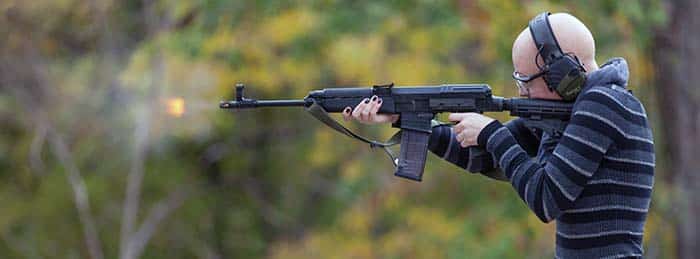
With this in mind, Dan Brown started developing more Americanized variants of the vz 58. The 5.56mm model could use either flap-released Czech magazines made of tough transparent polymer or, with a pinned mag well adapter, button-released AR-15-compatible magazines. After comparing both options in use, I went with the rock and lock Czech design. While the 5.56mm version is slightly heavier than the 7.62mm, it is much more accurate at around 2MOA using a red dot on a side mount. The heavier barrel also stays cool much longer, offering heat endurance over 100 rounds. The barrel length is 16 inches, so threaded muzzle devices are available instead of the pinned parts required by the shorter barrel of the original. The vz 58 Classic model in 7.62mm was updated with the 16-inch Walther-made barrel also, improving its accuracy to the same 2MOA, although it’s difficult to achieve such a result with relatively short base open sights. The wooden furniture has been replaced with plastic of the same shape.
The ultimate development for today is the Elite model, a vz 58 with Magpul Zhukov furniture adapted from the AK-47. Adjustable and possessed of long heat-shielded forends, it makes the vz 58 into more of a rifle and less of a neutered semi-auto “avtomat.” On the newer models, the charging handle is moved to the left side for manipulation with the weak hand. The machined heat shields and the longer barrel with a flash hider raise the weight of this model to about even with an AK clone. Run with side-mounted quick-detachable optics, it makes 2MOA consistently viable in the field with hunting soft points or good-quality FMJ ammunition. In my use, Federal, Corbon and G2 defensive loads showed the best results.
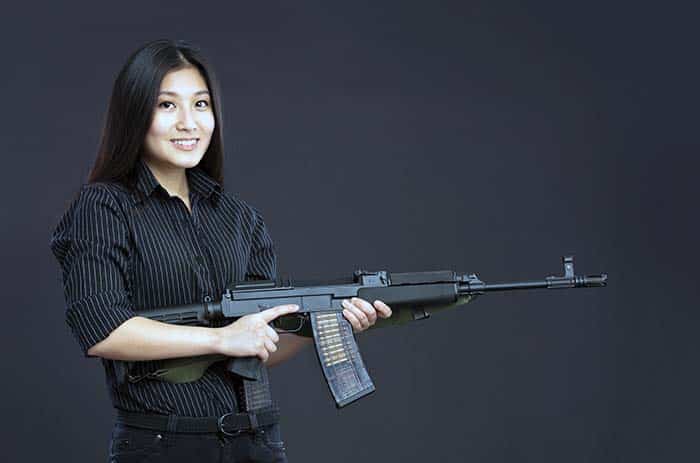
My friend David Esche, an enthusiast of all things related to vz 58, discovered that the rifle can safely use hard cast bullets without shaving material into the gas port. With just a red dot sight, he achieved 2.5 to 3 MOA with the original milsurp barrel. Serious accuracy testing is limited by the scope mounting options: even the low side mount requires a raised cheekpiece, while a high mount permitting the use of iron sights puts even the small red dots too high for comfort. With a low scope mount and a compact optic, such as the Leupold 1.5-4x20mm, the vz 58 Elite can get down to 1.5MOA when fired from a rest, an impressive achievement considering the automatic origins of the design. Larger magnified scopes have too much offset from the boreline and from the cheek rest, so they are not very practical for field use. Running iron sights, the Elite model is better than the original thanks to the addition of a point-blank 50-meter setting, adding to the 100–800-meter markings. All vz 58s benefit from a fiber optic front sight insert from HiViz: the AK-marked part fits fine.
Another model made for California, New York and other such oppressed states is the ironically named vz 58 Liberty. Made with a fixed 10-round box magazine, it runs similarly to the SKS by using top loading from stripper clips. Unlike the SKS, it has very low felt recoil. The fixed magazine permits legal use of an adjustable stock and a flash hider. Stripper clip reloading, by the way, works with the regular detachable magazines as well. The bolt stays back on the last shot, which is another Czech advantage over the AK platform. The detachable magazine model can be converted to fixed magazine and back in about 10 minutes with simple tools.
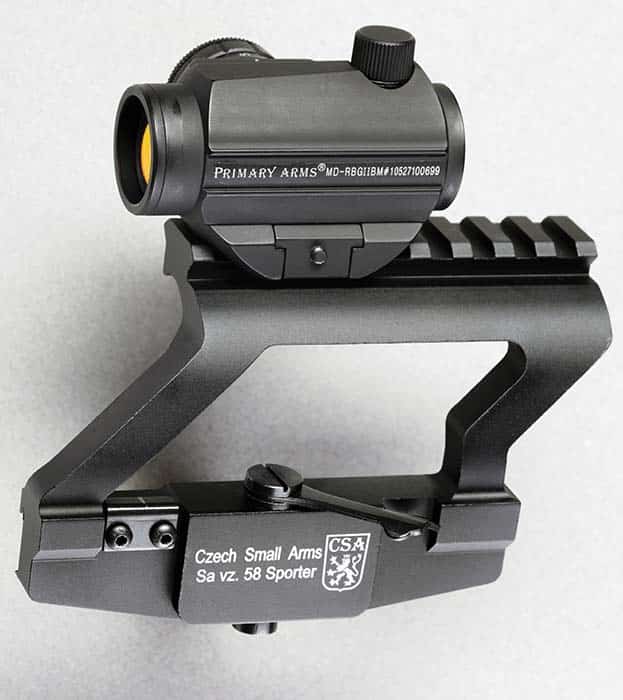
The rifles feed soft point and hollow point ammunition reliably. So far, the best defensive loads I have found are the Corbon DPX, G2 Trident Ripout and Federal Powershock. All give substantial expansion–up to 0.9 inches with Trident–and 16 to 20 inches of gel penetration. The vz 58 Classic had no flash hider and still produced minimal illumination with these loads. The Elite models come with very effective birdcage flash hiders that cut visible muzzle signature almost to zero.
The vz 58 Elite excels where the Ruger Mini-30 failed, becoming an accurate and handy .30 caliber carbine for short-range use. My subjective judgement is that it handles better than the 805 Bren, which replaced the vz 58 in Czech military service. It’s one of the most pleasant intermediate cartridge rifles for range use, and I recommend it for self-defense or short-range hunting.
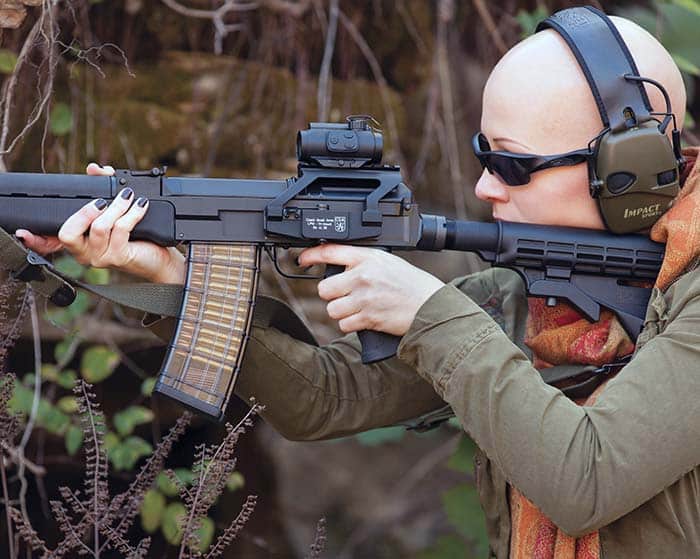
| This article first appeared in Small Arms Review V21N9 (November 2017) |



